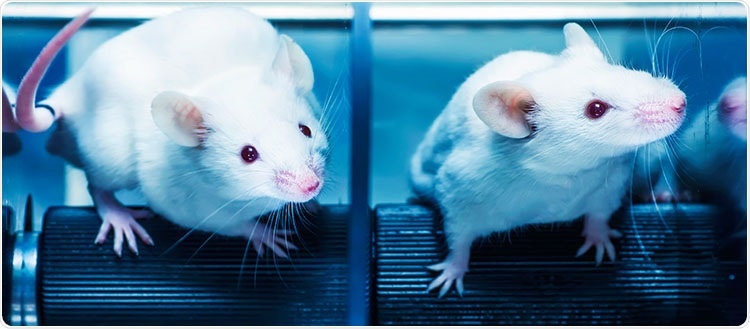Parkinson’s disease is a neurodegenerative disease in which a specific type of neuron, the dopaminergic neuron, is destroyed. Tremors, involuntary muscular contractions, and balance issues are all symptoms of this condition, which are caused by the degeneration of these neurons, which hinders the transmission of signals governing particular muscle movements.

Biologists have created mutants of the Fer2 homolog in mouse dopamine neurons. Image Credit: Adobe Stock.
Using the fruit fly as a model, a team from the University of Geneva (UNIGE) studied the degradation of these dopaminergic neurons. The researchers discovered a crucial protein in flies and mice that protects against the disease and might be used as a novel therapeutic target. The results of this research may be found in the journal Nature Communications.
Except in rare cases representing a single gene, most Parkinson’s cases are caused by a combination of genetic and environmental risk factors. However, mitochondrial failure in dopaminergic neurons is a general feature of the disease’s beginning. When a cell is injured, these little factories within it are responsible for energy generation as well as initiating the cell’s self-destruct mechanisms.
The fruit fly, or Drosophila, is used in the laboratory of Emi Nagoshi, Professor in the Department of Genetics and Evolution at the UNIGE Faculty of Science, to explore the mechanisms of dopaminergic neuron degeneration. Nagoshi’s research group is especially interested in the Fer2 gene, whose human equivalent encodes a protein that regulates the expression of other genes and whose mutation may cause Parkinson’s disease through unknown pathways.
This research team previously established that a mutation in the Fer2 gene induces Parkinson’s-like symptoms in flies, including a delay at the beginning of the movement. Researchers also noticed flaws in the structure of dopaminergic neurons’ mitochondria, which were comparable to those seen in Parkinson’s patients.
Protecting neurons
Because a lack of Fer2 results in Parkinson’s disease-like symptoms, the researchers investigated if increasing Fer2 levels in the cells may protect the cells. When drosophila is subjected to free radicals, their cells experience oxidative stress, which causes dopaminergic neurons to degrade. The researchers were able to see that when the flies overproduce Fer2, oxidative stress has no negative effect on them, corroborating the concept of its protective role.
We have also identified the genes regulated by Fer2 and these are mainly involved in mitochondrial functions. This key protein therefore seems to play a crucial role against the degeneration of dopaminergic neurons in flies by controlling not only the structure of mitochondria but also their functions.”
Federico Miozzo, Study First Author and Researcher, Department of Genetics and Evolution, Université De Genève
A new therapeutic target
The biologists developed mutations of the Fer2 homolog in mice dopaminergic neurons to see if Fer2 has a similar role in mammals. Researchers found defects in the mitochondria of these neurons, as well as motility impairments, in elderly mice, much as they did in the fly.
We are currently testing the protective role of the Fer2 homolog in mice and results similar to those observed in flies would allow us to consider a new therapeutic target for Parkinson’s disease patients.”
Emi Nagoshi, Professor, Department of Genetics and Evolution, Faculty of Science, Université De Genève
Source:
Journal reference:
Miozzo, F., et al. (2022) Maintenance of mitochondrial integrity in midbrain dopaminergic neurons governed by a conserved developmental transcription factor. Nature Communications. doi.org/10.1038/s41467-022-29075-0.